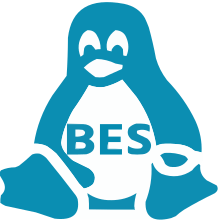System information
Based on: Debian Trixie (stable)
Version number: 3-1
DE: JWM
WM: JWM
Processor architecture: 64bit
Disk usage: average 8 GB
Ram usage: average 290 MB
Kernel: 6.12.48-1-amd64
Icon theme: bes-curved-dark
System theme: bes-dark
Installer: Calamares
Grub installation: UEFI and BIOS
Password
Name: besgnulinux
Password: live
What has been done in the Besgnulinux JWM 3-1 release?
In this version, the base design was kept as is, but many changes were made.
Some regularly added software has been removed from the system upon request. The ISO file has been reduced to around 2500 megabytes. Libreoffice, Inkscape, Games, Printer are some of the software that will not install. The installation of these software is left to the user's discretion. The ability to add items to the menu has been adapted. This was also done by request. Users can add or remove items from the menu. A relatively modern menu has been added to the JWM menu. An image of this menu, called App Finder, can be seen below. A second menu is not required; it's simply for user preference. Another significant change is the change to the default file manager. The latest version of the Pcmanfm file manager, which we've been using for years, is riddled with bugs. Therefore, it's been replaced by the Nemo file manager. Nemo works well with JWM and is quite lightweight, consuming an average of 25MB of memory. This time, the desktop is active. Spacefm is managing the desktop. Spacefm is responsible for the desktop. Nemo has been integrated into the system for normal use. 18 items for various operations have been added to the Nemo right-click context menu. These items will make many user tasks easier. Another change is that the QMPlay2 video player has been made the default, which I find lightweight and capable. Tray and record features have been added to the screenshot software. You can add it to the system tray and record the screen. Some Besgnulinux tools have been reorganized. Some suspicious looking items have been streamlined. The touchpad indicator is active, you can remove it if you are not using the laptop. You can install Flatpak and Virtualbox from the "third-party software" tool. You can also install the Liquorix kernel from the same tool. Also, I don't know if it's necessary, but a welcome screen has been added. You can disable it from running at startup if desired.
Some software installed on the system
Brave browser, Abiword, Nemo, Pluma, Lxterminal, Xarchiver, Gparted, Synaptic, Mtpaint, QMPlay2...
As always, you can download this version, which has been purified from background software other than basic services, designed for ease of use and with care taken for stable operation, from the link below.
Video
Other images






















